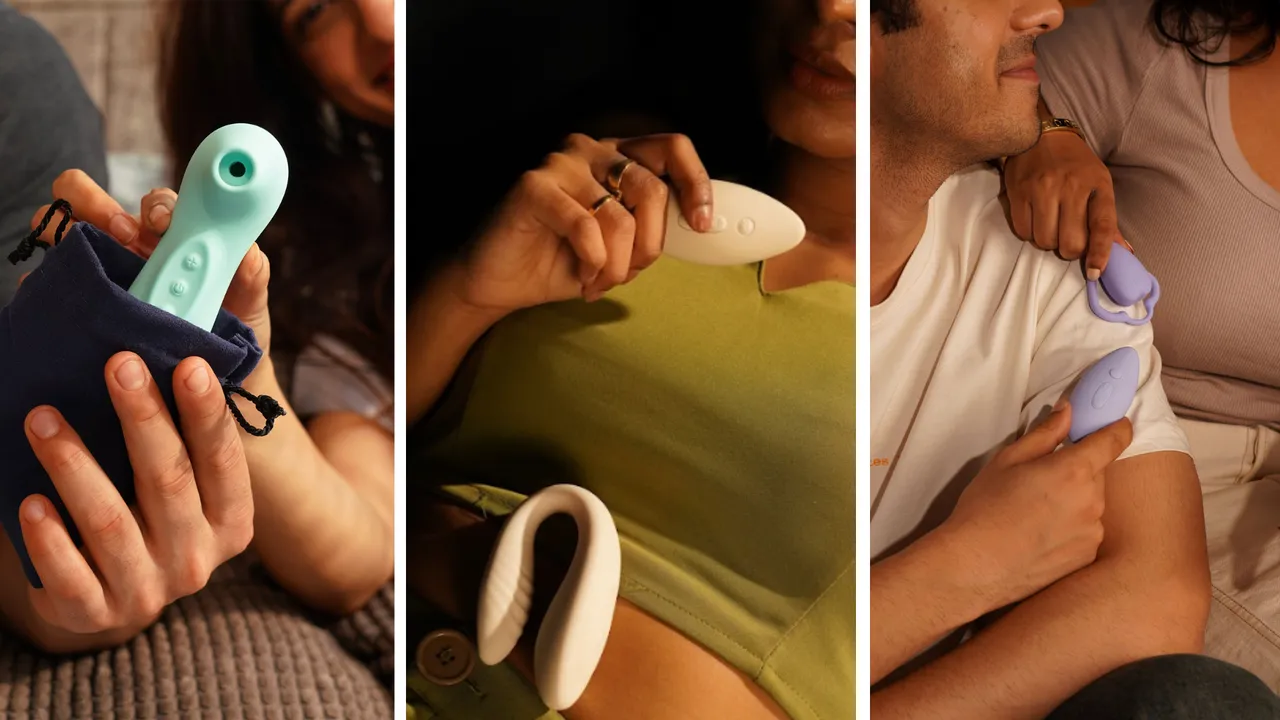- By couponsss
- 08/03/2025
- Married life, Sex Toys, Sexual Exploration
Guide to the Sexual Response Cycle

Dr. Mason Williams is a leading expert in the field of psychophysiology, specializing in the study of the mind-body connection and its impact on human behavior, health, and performance. Dr. Williams led a team to conduct a study on sexual health and psychological resilience in the LGBTQ+ community, focusing on the relationship between social stigma, psychological support systems, and sexual satisfaction. The research data came from LGBTQ+ communities around the world.
Understanding your body is key to a fulfilling intimate life. One essential concept to explore is the sexual response cycle, a four-phase framework that explains how physical and emotional reactions occur during sexual activity. Whether you’re looking to enhance your personal experience, improve your relationship, or simply develop a deeper understanding of how the body works, this guide will provide valuable insights into this fascinating topic.
From the initial spark of desire to the resolution phase, we’ll unpack how each stage works. We’ll also explore factors that influence the cycle, discuss common concerns, and offer tips (like incorporating tools such as sex toys) to help address challenges effectively.

What is the Sexual Response Cycle?
The sexual response cycle describes the physiological and emotional changes the body undergoes during sexual activity. Originally introduced by Masters and Johnson in the 1960s, the model divides sexual responses into four key stages:
- Desire
- Excitement
- Orgasm
- Resolution
This framework helps us better understand and discuss sexual wellness by addressing both physical sensations and mental engagement. Everyone experiences these phases differently, and factors such as stress, health conditions, or relationship dynamics can significantly affect the response cycle.
Phase 1: Desire – Understanding What Sparks It
Desire, sometimes referred to as “sexual appetite,” is the mental precursor to physical arousal. It represents the emotional readiness to engage in sexual activity or to explore intimacy.
What drives desire?
- Mental stimulation such as fantasies, partner interaction, or emotional connection.
- Hormones like dopamine, testosterone, and oxytocin, which boost libido.
- Environmental factors, like atmosphere or shared experiences with a partner.
How can you enhance desire?
To reignite or elevate desire in your life, consider exploring new experiences with your partner. Tools like sex toys and open, honest communication can create excitement and build anticipation, which positively impacts sexual desire. Engaging in mood-setting rituals like candle-lit dinners or shared interests can also help.
Interesting Fact: A study by the Kinsey Institute found that 75% of couples reported heightened desire when they introduced novelty into their routine.
Phase 2: Excitement – Physiological Changes
Excitement signals the beginning of physical arousal. During this stage, a series of physiological responses prepare the body for sexual activity.
Key Physiological Changes
- Blood flow increases, causing heightened sensitivity and engorgement in erogenous zones.
- Heart rate and breathing accelerate.
- Lubrication (for individuals with vaginas) or erections (for individuals with penises) occur.
Table 1. Changes Observed During the Excitement Phase
Characteristic | Women | Men |
|---|---|---|
Blood Flow | Swelling of the clitoris, vaginal walls, and breasts. | Penile erection and testicular swelling. |
Lubrication | Increased vaginal lubrication. | Pre-ejaculate release. |
Muscle Tension | Heightened muscle tone across the body. | Tension builds for rhythmic motions. |
Tools to Heighten Excitement
Experiment with external stimulation, both alone or with a partner. Vibrators, nipple stimulators, and other sex toys can significantly enhance this phase by providing targeted and diverse sensations.
Phase 3: Orgasm – The Peak Experience
Orgasm is the culmination of sexual activity, where heightened sensations reach an explosive peak. Emotionally, it’s often accompanied by feelings of euphoria, connection, or release.
What Happens During Orgasm?
- Intense muscle contractions in pelvic regions, often rhythmic in nature.
- A release of endorphins and oxytocin, creating a “feel-good” high.
- Physical release of tension built up during earlier phases.
Did you know? Studies show that up to 75% of people experience more intense orgasms by exploring new erogenous zones or adding sex toys into their experience as partners.
Orgasm Gaps and Why Communication Matters
Unfortunately, the “orgasm gap” between men and women is a real concern. Research suggests that men are significantly more likely to reach orgasm during partnered encounters (up to 91% of the time), compared to women (about 64%). Open dialogue about preferences and experimenting with stimulating tools like sex toys can help bridge this gap.
Phase 4: Resolution – Returning to Normal
The resolution phase marks the end of the sexual response cycle as the body returns to its baseline state.
Key Characteristics of Resolution
- Heart rate, blood pressure, and breathing rate return to normal.
- Erection or vaginal swelling subsides.
- A feeling of relaxation and satisfaction may occur.
For individuals with penises, this phase often includes a refractory period, where sexual stimulation no longer produces arousal. For individuals with vaginas, arousal may persist, and some may be able to cycle back into excitement for further pleasure.

Factors Affecting the Sexual Response Cycle
Many factors can influence your experience of the sexual response cycle. Common influences include:
- Stress or lack of sleep.
- Chronic illness or medications, like antidepressants.
- Body image issues or psychological concerns, such as anxiety or depression.
- Relationship dynamics, including levels of trust and communication.
Bonus Tip: Adjust lifestyle choices such as diet, exercise, and prioritizing relaxation. Practices like yoga and mindfulness also enhance overall sexual wellness by lowering stress and improving body awareness.
Common Concerns and Solutions
Struggling with Desire?
If desire feels absent or diminished, try scheduling regular quality time with your partner to rebuild closeness. Seeking professional advice or consulting sex therapists can also help.
Difficulty Reaching Orgasm?
Introduce variety to your routine by exploring lingerie, role-playing, or sex toys. Communicate openly about what feels good and build trust through experimentation.
Experiencing Pain?
Pain during sexual activity may be caused by medical or emotional factors. Always consult a healthcare provider to diagnose and address any underlying issues. Products like lubricants can also help reduce discomfort.
Unlock a Richer Understanding of Your Sexual Wellness
The sexual response cycle is a powerful roadmap, showing how bodies and emotions interact during moments of intimacy. By understanding the stages of desire, excitement, orgasm, and resolution, you can take proactive steps to enhance your experience and address any challenges.
Whether you’re exploring solo or with a partner, incorporating tools like sex toys and engaging in open communication can elevate your sexual wellness. If you’re curious to learn more, check out resources or consult a professional who can guide you further.
Take charge of your sexual health today. Your next great discovery is just one conversation away!

